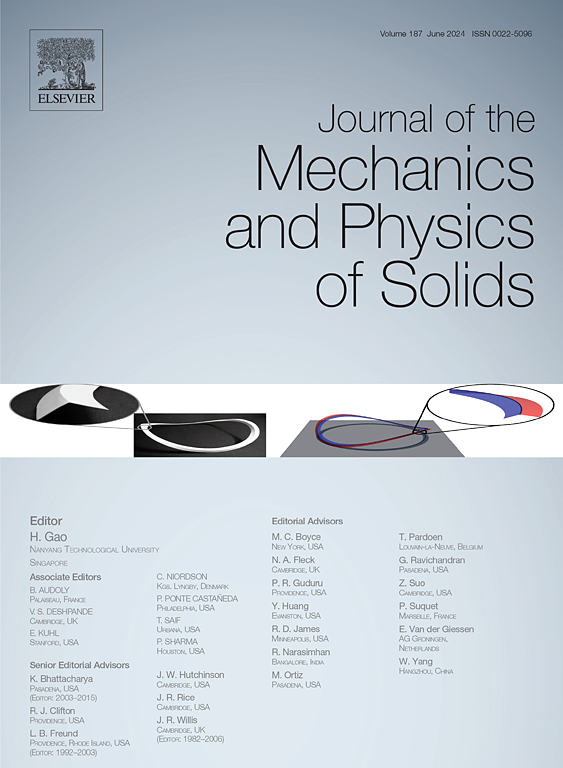Extreme resilience and dissipation in heterogeneous disordered materials
IF 6
2区 工程技术
Q2 MATERIALS SCIENCE, MULTIDISCIPLINARY
引用次数: 0
Abstract
Long range order and symmetry in heterogeneous materials architected on crystal lattices lead to elastic and inelastic anisotropies and thus limit mechanical functionalities in particular crystallographic directions. Here, we present a facile approach for designing heterogeneous disordered materials that exhibit nearly isotropic mechanical resilience and energy dissipation capabilities. We demonstrate, through experiments and numerical simulations on 3D-printed prototypes, that nearly isotropic, extreme resilience and dissipation can be attained in the proposed heterogeneous materials with a small, finite number of random spatial points. We also show that adding connectivity between random subdomains leads to much enhanced elastic stiffness, plastic strength, energy dissipation, shape recovery, structural stability and reusability in our new heterogeneous materials. Overall, our study opens avenues for the rational design of a new class of heterogeneous materials with isotropic mechanical functionalities for which the engineered disorder and connectivity throughout the subdomains plays a crucial role.
非均质无序材料的极端弹性和耗散
基于晶格结构的非均质材料的长程有序和对称导致弹性和非弹性各向异性,从而限制了特定晶体学方向上的机械功能。在这里,我们提出了一种简单的方法来设计具有几乎各向同性机械弹性和能量耗散能力的非均质无序材料。通过对3d打印原型的实验和数值模拟,我们证明,在具有少量有限数量的随机空间点的非均质材料中可以获得近乎完全的各向同性。我们还表明,在我们的新型非均质材料中,增加随机子域之间的连通性可以大大提高弹性刚度、塑性强度、能量耗散、形状恢复、结构稳定性和可重用性。总的来说,我们的研究为合理设计一类具有各向同性机械功能的新型异质材料开辟了道路,其中整个子域的工程无序起着至关重要的作用。
本文章由计算机程序翻译,如有差异,请以英文原文为准。
求助全文
约1分钟内获得全文
求助全文
来源期刊
CiteScore
9.80
自引率
9.40%
发文量
276
审稿时长
52 days
期刊介绍:
The aim of Journal of The Mechanics and Physics of Solids is to publish research of the highest quality and of lasting significance on the mechanics of solids. The scope is broad, from fundamental concepts in mechanics to the analysis of novel phenomena and applications. Solids are interpreted broadly to include both hard and soft materials as well as natural and synthetic structures. The approach can be theoretical, experimental or computational.This research activity sits within engineering science and the allied areas of applied mathematics, materials science, bio-mechanics, applied physics, and geophysics.
The Journal was founded in 1952 by Rodney Hill, who was its Editor-in-Chief until 1968. The topics of interest to the Journal evolve with developments in the subject but its basic ethos remains the same: to publish research of the highest quality relating to the mechanics of solids. Thus, emphasis is placed on the development of fundamental concepts of mechanics and novel applications of these concepts based on theoretical, experimental or computational approaches, drawing upon the various branches of engineering science and the allied areas within applied mathematics, materials science, structural engineering, applied physics, and geophysics.
The main purpose of the Journal is to foster scientific understanding of the processes of deformation and mechanical failure of all solid materials, both technological and natural, and the connections between these processes and their underlying physical mechanisms. In this sense, the content of the Journal should reflect the current state of the discipline in analysis, experimental observation, and numerical simulation. In the interest of achieving this goal, authors are encouraged to consider the significance of their contributions for the field of mechanics and the implications of their results, in addition to describing the details of their work.

 求助内容:
求助内容: 应助结果提醒方式:
应助结果提醒方式:


